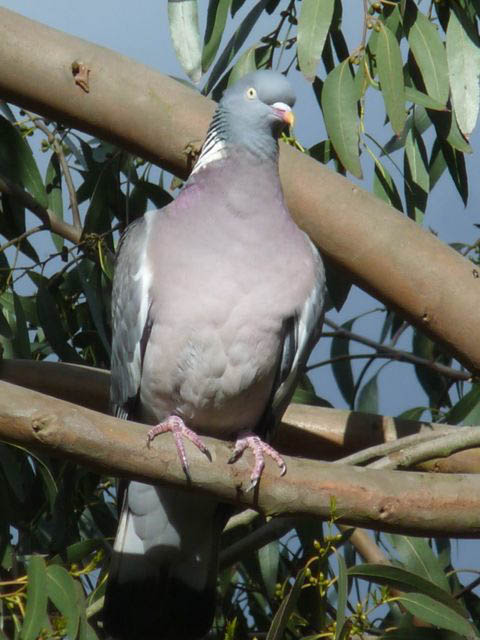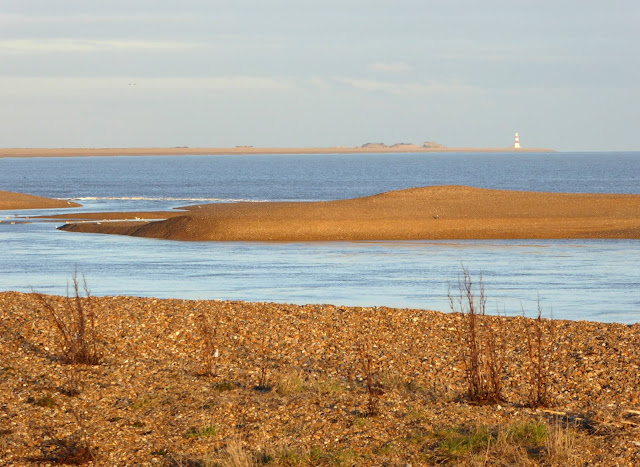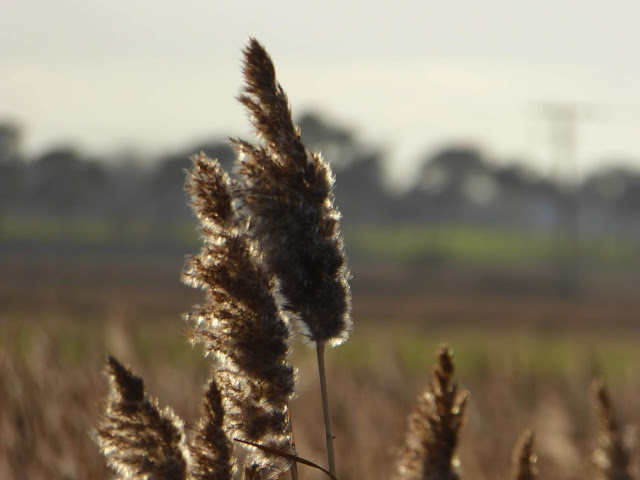I did my RSPB Big Garden Birdwatch survey today. The weather was cold and clear, with a fair bit of sunshine. The gusting wind had died down, but it was still breezy.
I decided to take a slightly different approach this year, and I hope it didn't mean that I missed too many birds in the process. Inspired by sculptor and fellow blogger, Jennifer Tetlow's bird-watch, which resulted in her clay 'Wren', I decided to add a creative element (not to the counting, of course!) by writing a draft Haiku/俳句 for each species seen. I am leaving these Haiku in their 'raw' organic state for now, but may polish them up in due course. I thought you might be interested to see how I got on...
small, bright and hungry,
hanging on the silver birch –
blue as this cold day
 |
| Blue tit (right) and Great tit (left), 28 Jan. 2019 |
here for a moment,
the Great tit departs at speed,
its bill full of fat
 |
| Goldfinch (record shot), 28 Jan. 2019 |
the clock ticked slowly:
suddenly a single finch
sprinkled red and gold
 |
| Long-tailed tit, 28 Jan. 2019 |
so slight and graceful,
Long-tailed tits slip through the leaves –
white clouds, pink feathers
 |
| Blackbird (old photo) |
squeezing her umber feathers
between two branches
 |
| Robin, 28 Jan. 2019 (though by this time it had left the nest) |
not an early bird,
but its fire-cracker waistcoat
gleamed from an old nest
 |
| Wood pigeon (old photo) |
last bird on the list
how strange it was on its own:
where were the pigeons?
Sadly, a number of our 'usual garden suspects' (Dunnock, Wren, Chaffinch, Coal tit...) failed to show up. This may be because of the weather or on account of a recent Sparrowhawk visit. Others were 'there', but could not be counted because they did not land. The rest of the Goldfinch flock fell into this category along with two Collared doves (I hope one was the dove I hadn't seen since the Sparrowhawk paid us a visit) and a Carrion Crow. A Magpie and a Starling showed up almost immediately after my time was up so could not be included. I took photos of them.
The numbers on the chart below indicate the birds I counted in my garden from 12.30 to 13.30 today...
The animals I have seen in our garden during the last year (just Grey Squirrel and Hedgehog)... It's quite possible we saw a Stag beetle in among the Cockchafers, but I can't be sure: we definitely had a dead one on the grass a couple of years ago.
And, sadly, I didn't have a single House Sparrow. We rarely see House Sparrows in the garden.
These are the birds who came just after the count...
 |
| (Ringed) Starling, 28 Jan. 2019 |
 |
| Magpie, 28 Jan. 2019 |

























































